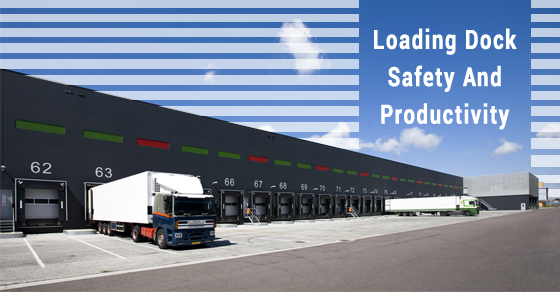When it comes to the material transfer zone, otherwise known by the acronym MTZ, one very important component is the loading dock. This goes from the drive approach and moves into the area intended for staging, receiving and shipping.
The reason it’s important to pay particular attention to the MTZ is that it will help businesses steer clear of delays, reduce the instances of on-the-job mishaps, achieve shipment schedules, safeguard against product damage, and keep customers happy.
That being said, businesses will only be able to achieve the MTZ ideal if, and only if, they have a loading dock that’s not only designed the right way, but also is kept in good working order. If companies have the right loading dock strategy, they can bolster productivity and efficiency – all while boosting safety and reducing expenses.
What follows is a run-down on how businesses can boost loading dock safety and productivity.
Perform Safety Audit
This step is the sort of proactive measure smart businesses will take to address problems before, rather than after, they occur. By conducting safety audits, businesses can ensure that their dock is in good shape and, if necessary, make changes.
Assess Security
What this step entails is looking into the degree of difficulty needed to use the loading dock to gain unauthorized access to corporate facilities. Post-evaluation, businesses might see the need to ensure that vehicle restraints and overhead doors are tied into the security system so that any attempted breach or unauthorized access will trigger an alarm.
Keep in Good Repair
Don’t overlook necessary maintenance. Critical dock parts like the dock levelers, overhead doors, and vehicle restraints need to be maintained periodically, and it is incumbent on businesses to ensure that the required work is done. As well, important moving components need to be cleaned, adjusted, and lubricated periodically. You’ll increase loading dock safety and productivity when everything is in good working order.
Dry Loading Docks
For the sake of safety, businesses should ensure that their loading docks are dry since a wet, slippery surface will make for a more dangerous work environment. Water accumulation can also lead to loading dock damage. In order to prevent this from happening, consider buying and installing rain diversion header seals to safeguard against possible water damage.
Out with the Old
In the event that existing loading docks are not up to the task of safely dealing with bigger trailers and loads, businesses should replace what they have with something more durable. Businesses may, for instance, opt for larger doors, levelers, and shelters rather than for the existing load dock they have in place. It’ll cost more money, but the costs can be justified in terms of the increased safety and productivity.
As can be seen, there are lots of ways that businesses can boost loading dock safety and productivity. The aforementioned suggestions provide some tangible ways that business can achieve this goal.


